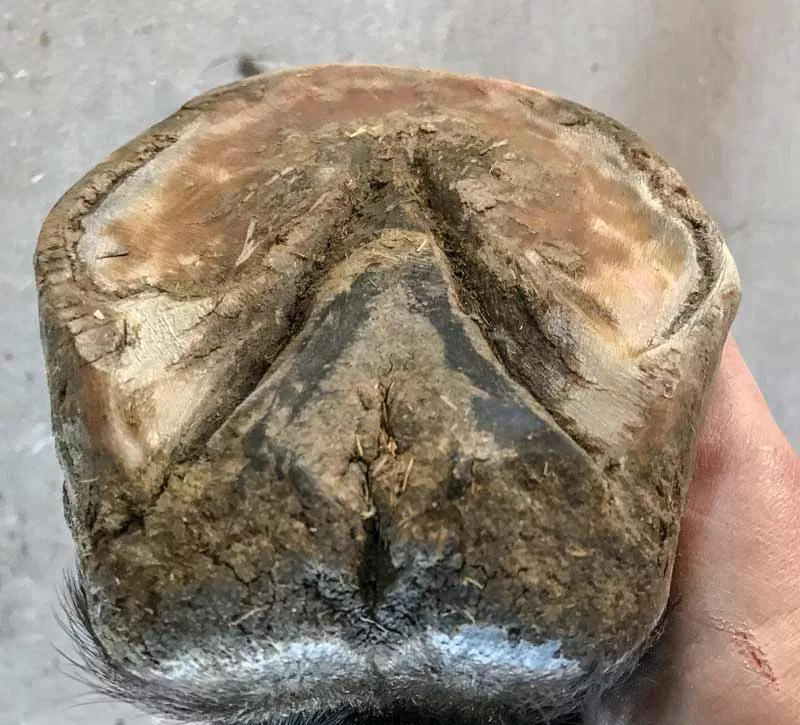American Farriers Journal
American Farriers Journal is the “hands-on” magazine for professional farriers, equine veterinarians and horse care product and service buyers.

Thin-soled horses can be a challenge. Thin soles chronically plague some horses, likely an inherited trait, while others can experience an acute case as the result of the environment, a recent trimming or as a side effect of another foot pathology, such as laminitis.
“It can be difficult to guess sole depth when trimming horses,” says Amy Rucker, a Columbia, Mo., equine veterinarian. “Sometimes I get distracted trying to achieve ‘balance,’ removing wall cracks, or making a foot look ‘pretty.’ The horse prefers mass to pretty. Radiographs can take the guesswork out of judging sole depth.”
One of Rucker’s clients recently experienced how easy it can be to misjudge a horse with thin soles. A Thoroughbred gelding used as a hunter and for light trail riding was unwilling to walk to the barn and eat after a trim and reset. The horse had no previous soundness issues. The owners called the farrier, who insisted it was not the shoes…